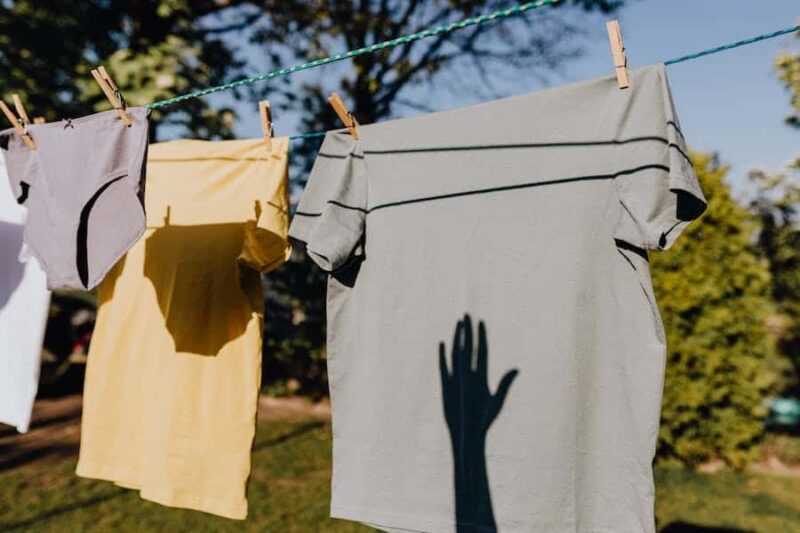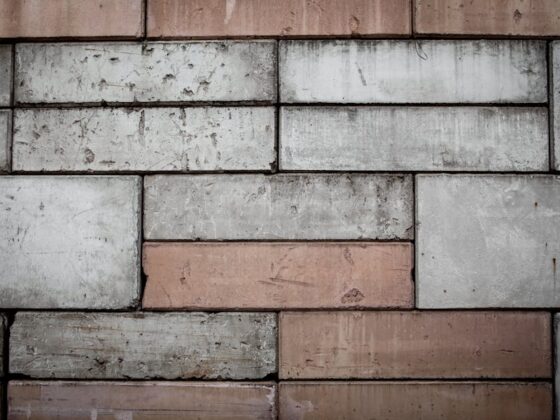In the realm of household chemicals, acetone holds a prominent place due to its versatility and widespread applications. Commonly used as a powerful solvent, it finds its way into our daily routines, from nail polish removal to paint thinning and adhesive clean-up. However, the convenience of acetone comes with a caveat: its potential to stain clothing. This article delves into the intriguing question: Does acetone stain clothes? We’ll explore the why, when, and how of acetone-related fabric stains, providing valuable insights into the science behind it, scenarios where stains are most likely to occur, and effective preventative measures and remedies. Understanding acetone’s interaction with fabrics is crucial for maintaining the longevity and aesthetics of our clothing.
Does Acetone Stain Clothes?
Yes, acetone can stain clothes. It possesses strong solvent properties that can interact with various fabrics, especially natural fibers like cotton and silk, leading to discoloration or damage. Stains are more likely when acetone comes into prolonged contact with clothing, and the risk increases with higher concentrations and higher temperatures. Taking precautions and prompt action can help mitigate the potential for staining when working with acetone-based products.
Why Can Acetone Stain Clothes?
Acetone can stain clothes primarily due to its strong solvent properties and its ability to interact with various fabric types. The key reasons why acetone can stain clothes include:
Solvent Properties: Acetone is a powerful solvent, capable of dissolving a wide range of substances. When it comes into contact with certain dyes, pigments, or oils present in fabrics, it can break down these materials and cause color transfer or discoloration.
Fabric Interaction: Different fabrics react differently to acetone. Natural fibers like cotton, wool, and silk are more susceptible to acetone damage than synthetic fibers like polyester and nylon. This is because natural fibers often have more organic components that can be affected by the solvent.
Factors Contributing To Staining: Several factors influence whether acetone will stain clothes, including the concentration of acetone in the solution, the duration of contact with the fabric, and the temperature at which the interaction occurs. Higher concentrations, longer contact times, and elevated temperatures increase the risk of staining.
When Does Acetone Stain Clothes?
Acetone can stain clothes in various situations and scenarios. Understanding when acetone is more likely to stain clothes is essential for taking preventive measures. Here are common situations and conditions in which acetone can stain clothes:
- Nail Polish Removal: When using acetone-based nail polish removers, accidental spills or splatters on clothing can lead to staining.
- Paint And Adhesive Removal: When using acetone to remove paint, glue, or adhesives, the risk of splashing or dripping onto clothing is high, especially if protective measures are not taken.
- Household Cleaning: When acetone is used for cleaning purposes, such as removing ink stains or marker marks, there’s a chance of it coming into contact with clothing and causing stains.
- Lack Of Protective Clothing: Not wearing appropriate protective clothing, like aprons or gloves, when working with acetone increases the risk of staining.
- Clothing Items At Higher Risk: Certain clothing items are more susceptible to acetone staining, such as delicate fabrics like silk and light-colored garments that show stains more prominently.
- Accidental Spills: Accidents can happen at any time, leading to acetone spills on clothing. Prompt action is crucial to minimize staining in such cases.
- Prolonged Exposure: Leaving acetone-soaked fabric unattended for an extended period can worsen the staining effect, making it harder to remove.
How To Prevent Acetone Stains?
Preventing acetone stains on clothes involves taking precautionary measures and knowing what to do in case of accidental spills. Here’s how to prevent acetone stains:
Wear Protective Clothing: Use old or disposable clothing when working with acetone. Wear an apron or protective smock to shield your clothing.
Use Gloves: Wear chemical-resistant gloves (e.g., nitrile) to protect your hands and prevent acetone from coming into contact with your clothing.
Work In A Well-Ventilated Area: Adequate ventilation helps disperse acetone fumes and reduces the risk of accidental spills.
Be Cautious With Containers: Use containers with secure lids to prevent leaks or spills. Pour acetone over a sink or in a controlled environment to minimize splashes.
Avoid Contact: Keep acetone away from clothing as much as possible. Be careful when handling bottles or containers.
Prompt Action After Spillage: If acetone spills on clothing, act quickly. Blot the stain gently with a clean, white cloth or paper towel to absorb excess acetone. Avoid rubbing, as it can spread the stain.
Rinse With Cold Water: Rinse the stained area under cold, running water immediately. This can help dilute and remove the acetone. Continue rinsing until the water runs clear.
Pre-Treat With Detergent: Apply a small amount of liquid laundry detergent to the stained area and gently rub it in. Let it sit for a few minutes before laundering.
Launder As Usual: Wash the garment as per the care instructions on the clothing label. Check for any remaining stains before drying. Heat can set stains, making them harder to remove.
Seek Professional Help: If the stain persists after home treatments, consider consulting a professional cleaner or dry cleaner for specialized stain removal techniques.
Alternative Solutions To Acetone
If you want to avoid using acetone for various purposes due to concerns about staining or its strong odor, there are alternative solutions available for specific tasks. Here are some alternative products and methods:
- Acetone-Free Nail Polish Removers: Look for nail polish removers labeled as “acetone-free.” They are typically less harsh on nails and skin and may have a milder scent.
- Non-Acetone Paint Removers: When removing paint or adhesives, consider using non-acetone-based paint removers, which are less likely to damage clothing or emit strong fumes.
- Environmentally Friendly Cleaning Options: For household cleaning tasks, choose eco-friendly and non-toxic cleaning products. These can be safer for both your health and the environment.
- Vegetable Oil Or Cooking Oil: When dealing with sticky substances like adhesive residue, you can try using vegetable oil or cooking oil to dissolve and remove the residue. Test a small, inconspicuous area first to ensure it won’t damage the fabric.
- Soap And Water: For minor stains and spills, using mild soap and cold water can be effective in removing stains from clothing. Gently rub the stained area with a sponge or cloth and rinse thoroughly.
- Rubbing Alcohol: Rubbing alcohol (isopropyl alcohol) can be an effective stain remover for certain types of stains, including ink and marker stains. Apply a small amount to the stain and blot, then wash as usual.
- Commercial Stain Removers: There are various commercial stain removers available on the market, each designed for specific types of stains. Read product labels and follow the instructions carefully.
- Consult Professional Cleaners: If you’re uncertain about stain removal or dealing with particularly stubborn stains, consider taking the garment to a professional cleaner for expert assistance.
Conclusion
In conclusion, understanding the potential for acetone to stain clothes is essential for maintaining the appearance and longevity of your garments. While acetone is a powerful solvent with diverse applications, its staining risk can be mitigated through precautionary measures like wearing protective clothing, using gloves, and working in well-ventilated areas. Prompt action when spills occur, such as rinsing with cold water and pre-treating stains, is crucial. Additionally, exploring alternative solutions tailored to specific tasks can help reduce reliance on acetone, promoting both convenience and fabric preservation in our daily routines.
FAQ’s
Can Acetone Damage Any Type Of Fabric?
Acetone can potentially damage natural fabrics like cotton and silk more than synthetic fabrics, but it can affect various fabric types to some extent.
Is Acetone Safe For All Clothing Colors?
Acetone can cause color fading or discoloration, so it’s best to avoid using it on light or delicate-colored clothing.
Can Acetone Stains Be Removed From Clothing?
With prompt action and the right stain removal techniques, acetone stains can often be effectively treated and removed from clothing.
Are Acetone-Free Nail Polish Removers Less Likely To Stain Clothes?
Acetone-free nail polish removers are generally milder and have a reduced risk of staining compared to those containing acetone.
What Should I Do If Acetone Stains Won’t Come Out?
If stains persist, consult a professional cleaner who specializes in stain removal for the best chance of restoring your clothing.









